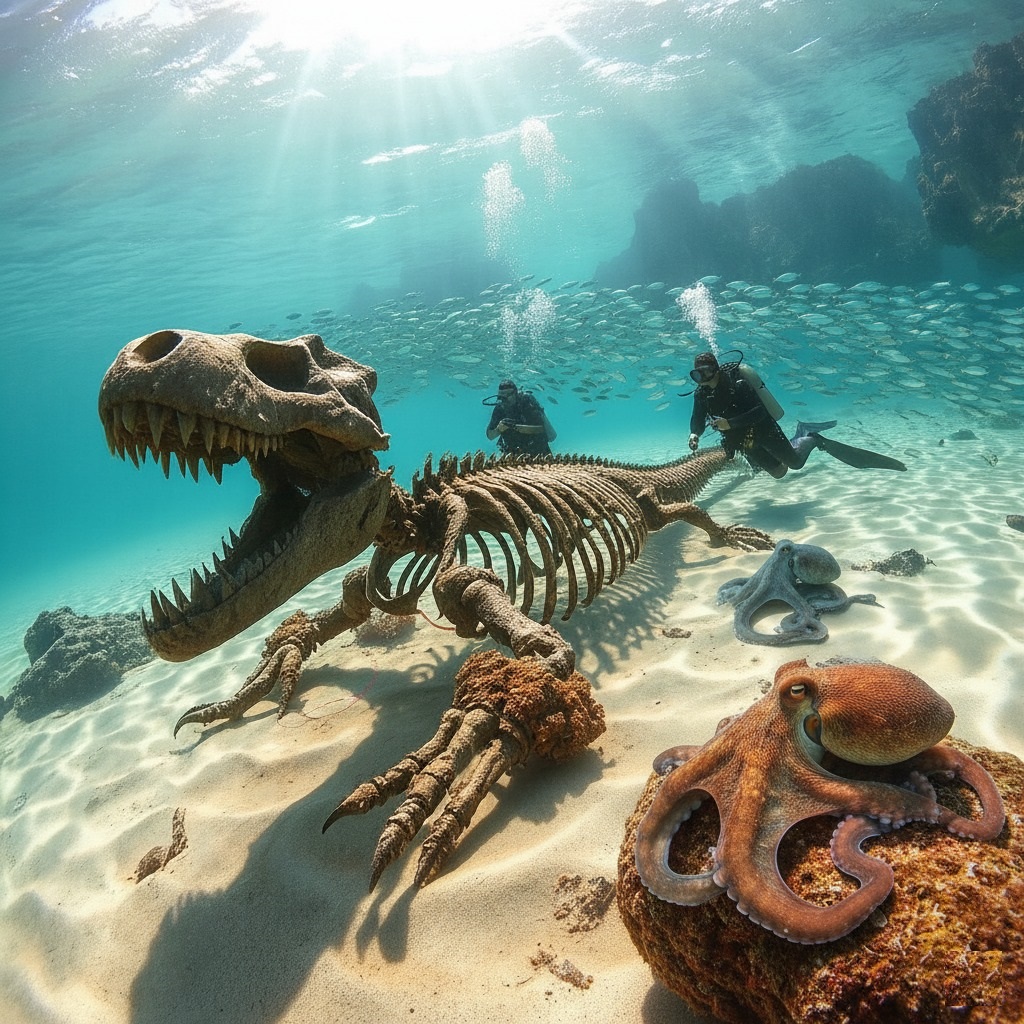The Lost Leviathan of the Mariana Trench: Divers Unearth Prehistoric Relic

The year is 2077. Humanity’s insatiable curiosity has pushed the boundaries of exploration further than ever before, not into the stars, but into the silent, crushing abyss of Earth’s own oceans. Dr. Aris Thorne, a marine paleontologist with a penchant for the impossible, and his seasoned deep-sea pilot, Captain Eva Rostova, were on a routine mapping expedition near the Challenger Deep, the deepest known point in the Mariana Trench. Their sub, the “Nautilus III,” was a marvel of bio-engineered resilience, designed to withstand pressures that would liquefy conventional steel.
For weeks, their sonar had painted monotonous landscapes of abyssal plains and hydrothermal vents. Then, an anomaly. A colossal, fragmented echo, unlike any geological formation, appeared on Aris’s screen. “Eva, bring us down slowly. I’m seeing… something unusual. Too structured for rock, too large for any known marine life.”
As they descended further, the light from the Nautilus’s powerful external lamps began to pierce the eternal twilight, revealing a breathtaking, impossible sight. There, sprawling across a pristine, sandy expanse, lay an immense skeleton. It wasn’t bone in the traditional sense, but a petrified, almost crystalline structure, perfectly preserved by the extreme pressures and lack of oxygen over unimaginable eons.
“By all the oceans…” Eva whispered, her voice a tremor of awe through the comms.
Aris, usually stoic, was practically vibrating. “It’s… it’s a dinosaur, Eva. But not just any dinosaur. Look at the cranial structure, the sheer scale of the vertebrae. This is unlike anything in our fossil records. And it’s here.”
The skeleton, easily seventy feet long, bore a striking resemblance to a terrestrial theropod, but with adaptations for a marine existence. Its limbs were subtly flattened, suggesting powerful paddles, and its ribs were unusually dense, perhaps to resist pressure. Strange, bioluminescent corals had begun to colonize parts of its ancient frame, pulsating with soft, otherworldly light.
Over the next few months, news of “The Lost Leviathan of the Mariana Trench” sent shockwaves through the scientific community. Expeditions were launched, careful recovery efforts initiated. Dating techniques, pushed to their limits by the unique petrification, estimated the creature to be over 180 million years old, placing it firmly in the Jurassic period – a time when dinosaurs were thought to be exclusively land-dwelling or shallow-water inhabitants.
Aris and Eva became reluctant heroes, their names etched into the annals of discovery. The Leviathan, eventually nicknamed “Challenger Rex” by a fascinated public, forced a radical re-evaluation of Mesozoic life. Did other colossal creatures roam the ancient deep? Had entire ecosystems existed, undisturbed and unknown, while dinosaurs ruled the land?
The Mariana Trench, once seen as a barren wasteland, was now recognized as a potential cradle of untold paleontological wonders. The discovery of Challenger Rex wasn’t just finding a fossil; it was opening a new chapter in Earth’s history, a testament to the enduring mysteries hidden beneath the waves, waiting for humanity’s gaze. The deep, it turned out, held secrets far grander than anyone had ever dared to imagine.
